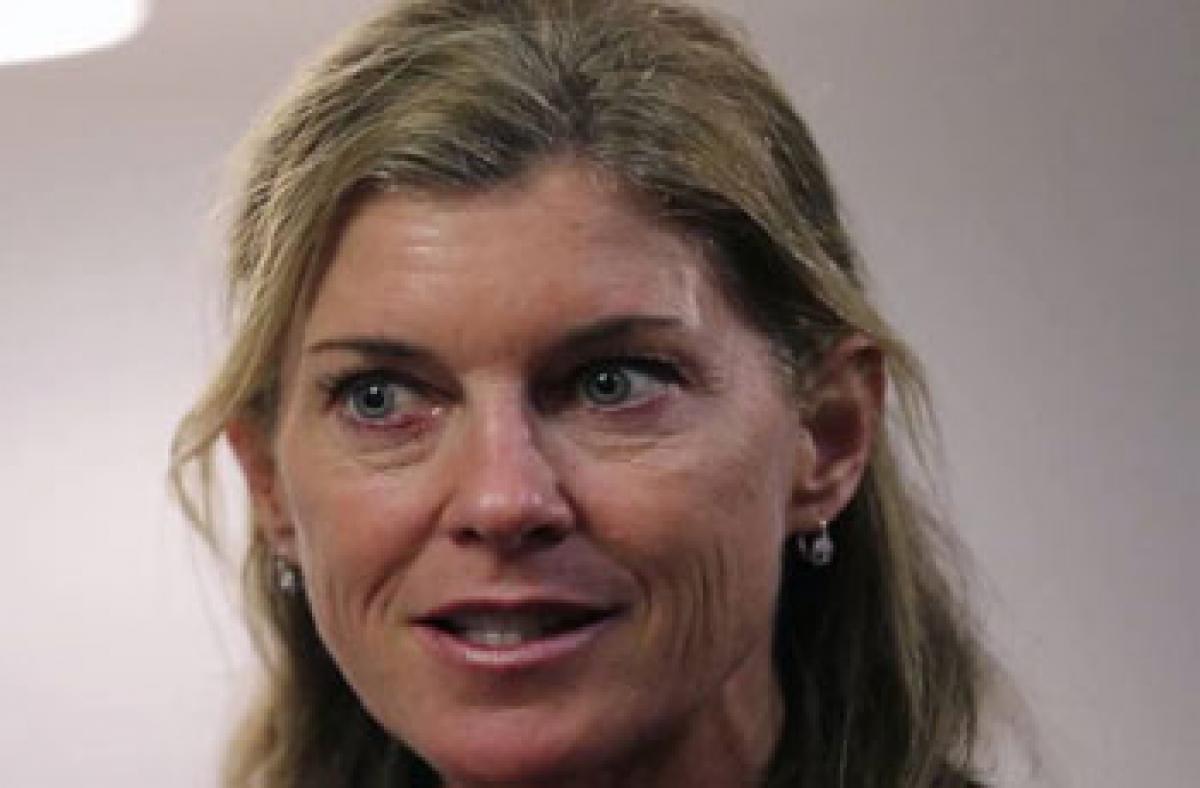Live
- Varun Dhawan Becomes First from Film Fraternity to Support Allu Arjun
- Mohan Babu Faces Setback as Court Rejects Bail in Journalist Attack Case
- After suspension, ex-registrar of iconic university in Bengal dismissed from job
- Passenger vehicles clock highest ever November sales in India
- Allu Arjun Remanded to Chanchalguda Jail in Stampede Case, Pushpa Faces 14-Day Custody
- K'taka BJP MLAs stage walkout from Assembly for not allowing discussion on Waqf row
- Mohan Yadav inaugurates MP's 8th Ratapani Tiger Reserve
- Bihar govt signs MoU for Sankara Eye hospital in Patna
- TB patients suffer high costs due to lost productivity, hospitalisation: ICMR study
- BWF World Tour Finals: Treesa-Gayatri crash out after losing to Japanese pair
Just In

Robin Hauser Reynolds is the director and producer of cause-based documentary films at Finish Line Features, brought her documentary film ‘CODE: Debugging the Gender Gap’, to Hyderabad recently. The film was screened privately at many of the offices in Hyderabad as well as at Prasad Film Labs.
 Despite a rise in the number of women working and studying in the field of Information Technology, it can’t be denied that their ratio to men is much less. This being the case in a developing nation comes as no surprise, yet American filmmaker Robin Hauser Reynolds exposes the same scenario that exists in the United States too
Despite a rise in the number of women working and studying in the field of Information Technology, it can’t be denied that their ratio to men is much less. This being the case in a developing nation comes as no surprise, yet American filmmaker Robin Hauser Reynolds exposes the same scenario that exists in the United States too
Robin Hauser Reynolds is the director and producer of cause-based documentary films at Finish Line Features, brought her documentary film ‘CODE: Debugging the Gender Gap’, to Hyderabad recently. The film was screened privately at many of the offices in Hyderabad as well as at Prasad Film Labs.
The screening was followed by a panel discussion with Kiranmai Pendyala, Corporate Vice President, Greater Asia, EMEA HR; Ramesh Loganathan, VP and Center Head, Progress Software-Hyderabad Labs; Manisha Saboo, Centre Head, Infosys; Russ Arun, General Manager, Microsoft India and Robin Hauser Reynolds, director of the film..
The documentary raises crucial questions and essential points. Exploring the reasons, it is shown that a combination of the lack of computer science as a subject in schools, thinking of coding as a man’s job, unsafe environment in newly established startup companies are some factors that have kept women away from the field. Real life instances and insights from several successful women, disclose how they had been treated for being a part of the designing and coding of products.
What was the inspiration behind the director’s choice of topic? Robin’s own daughter wished to drop out from her computer science major because she felt like she was not good enough at it. This was what led the director to researching on the topic. For various reasons, women have dropped out of this field, and Robin says that according to studies, there are going to be 1 million unfilled computer science jobs by 2020.
This should concern us, she says. However, through her documentary, Robin says she is not trying to encourage all women to start careers in coding. She says, “Not everybody needs to become a coder, but it is surprising that they don’t take it up when it is available to them!” She further observes that India may be doing much better than the USA for women in the IT sector, as we see many of them in the field.
In a discussion about the state of affairs in India, Kiranmai Pendyala said, “For women in India, it is ok if one doesn’t take care of her career, because a woman is not considered as the bread-winner of the family.” She further said that India’s IT sector has more women in service teams as opposed to product; and more in software engineering than hardware.
Ramesh Loganathan said, “Growing up, in school we never thought that girls are not good at something. This thinking tends to come up after the school level, sometime in college.”
It was also discussed that women often drop out from their careers for various reasons, especially family reasons mid-way through their careers, whereas men start to build their careers thus going higher up after the halfway point. The point that was well-established as a result of the screening and discussion of topic was, that this is as much men’s problem, as it is women’s, so there is still need for openness.
On a lighter note, the director said, “Had I not used the word ‘gender’ in the title of the documentary, I might have had more men in the audience!” Complete with relevant facts and figures, the film’s duration is 80 minutes and a 54-minute educational version of it is also available upon request from the website.

© 2024 Hyderabad Media House Limited/The Hans India. All rights reserved. Powered by hocalwire.com







